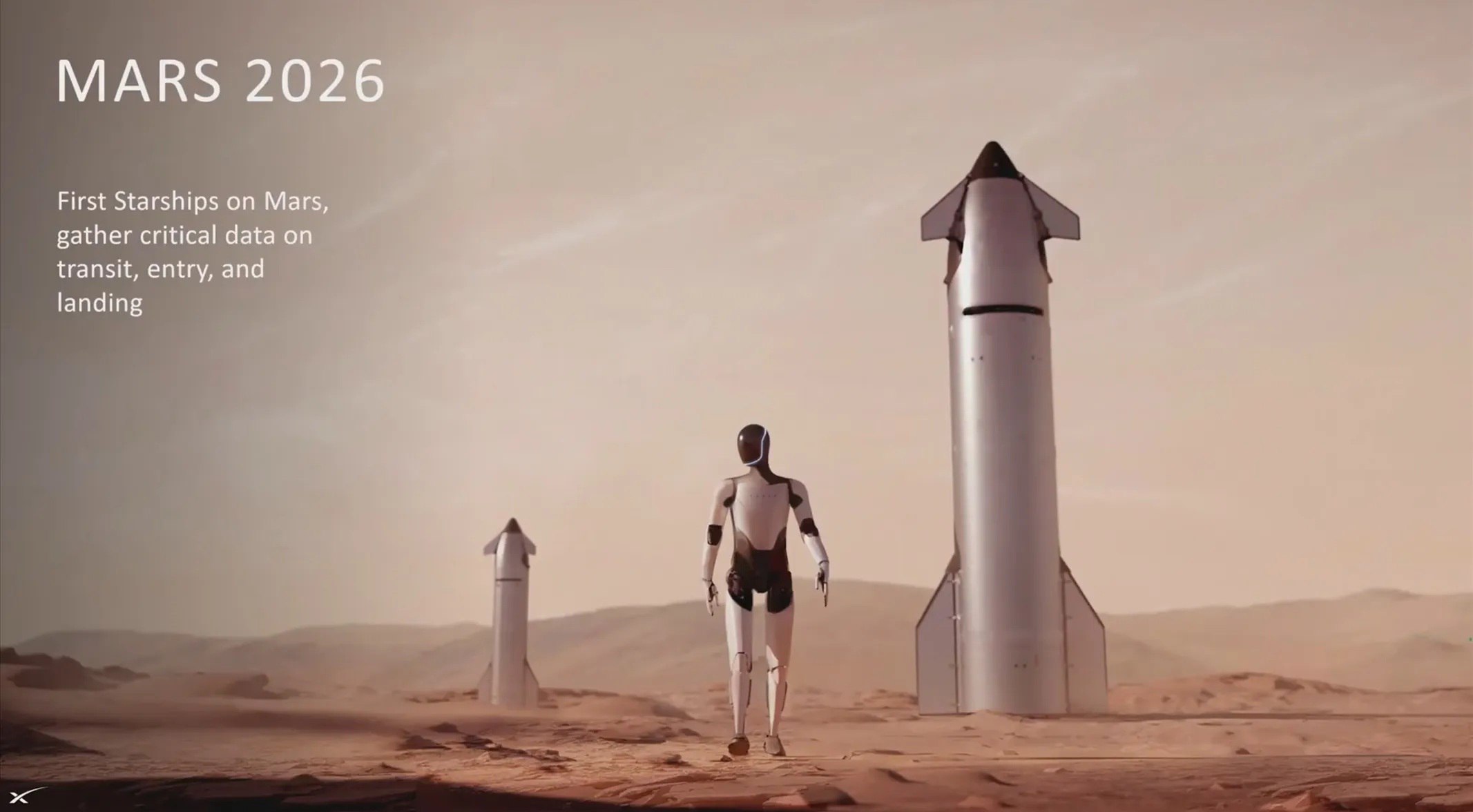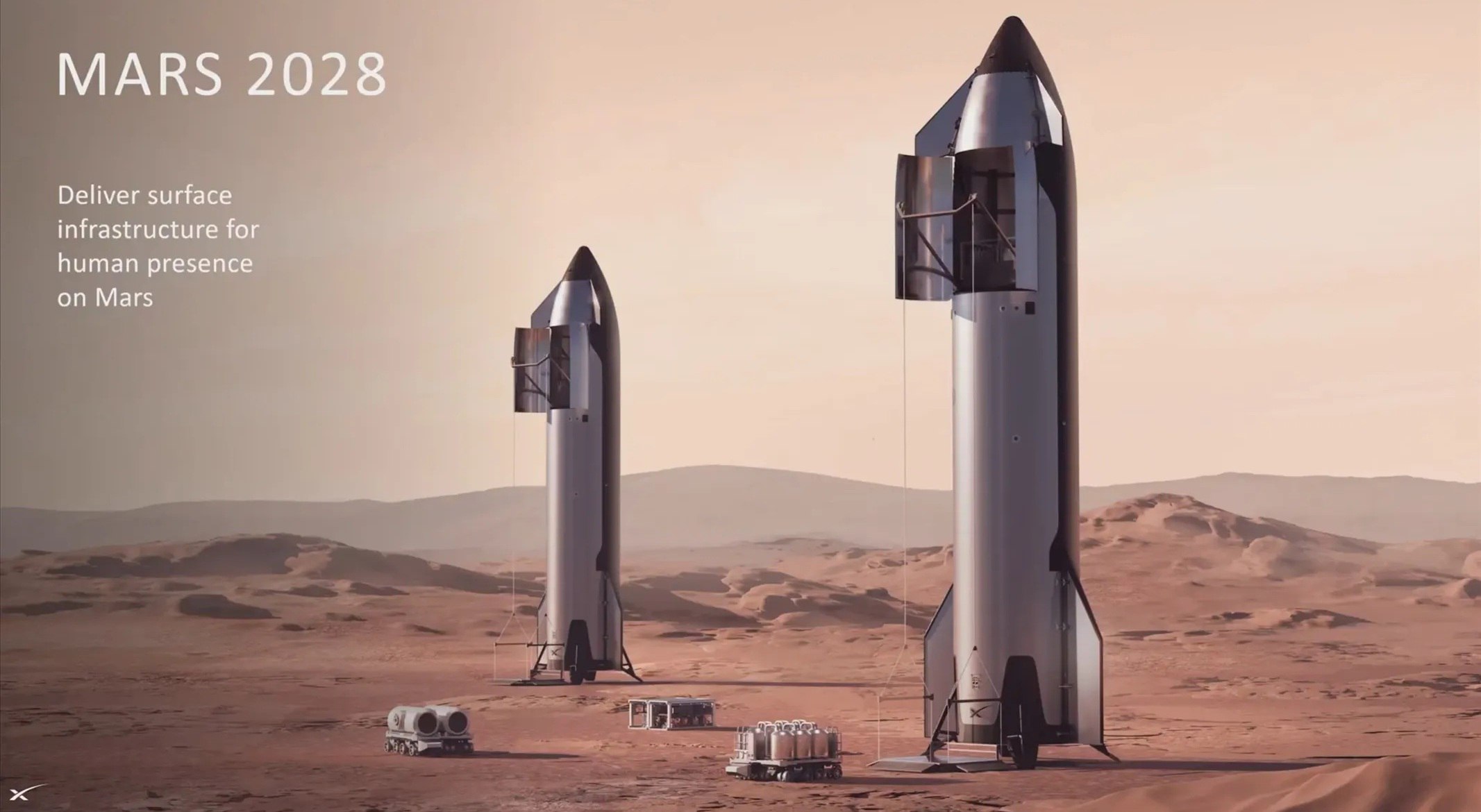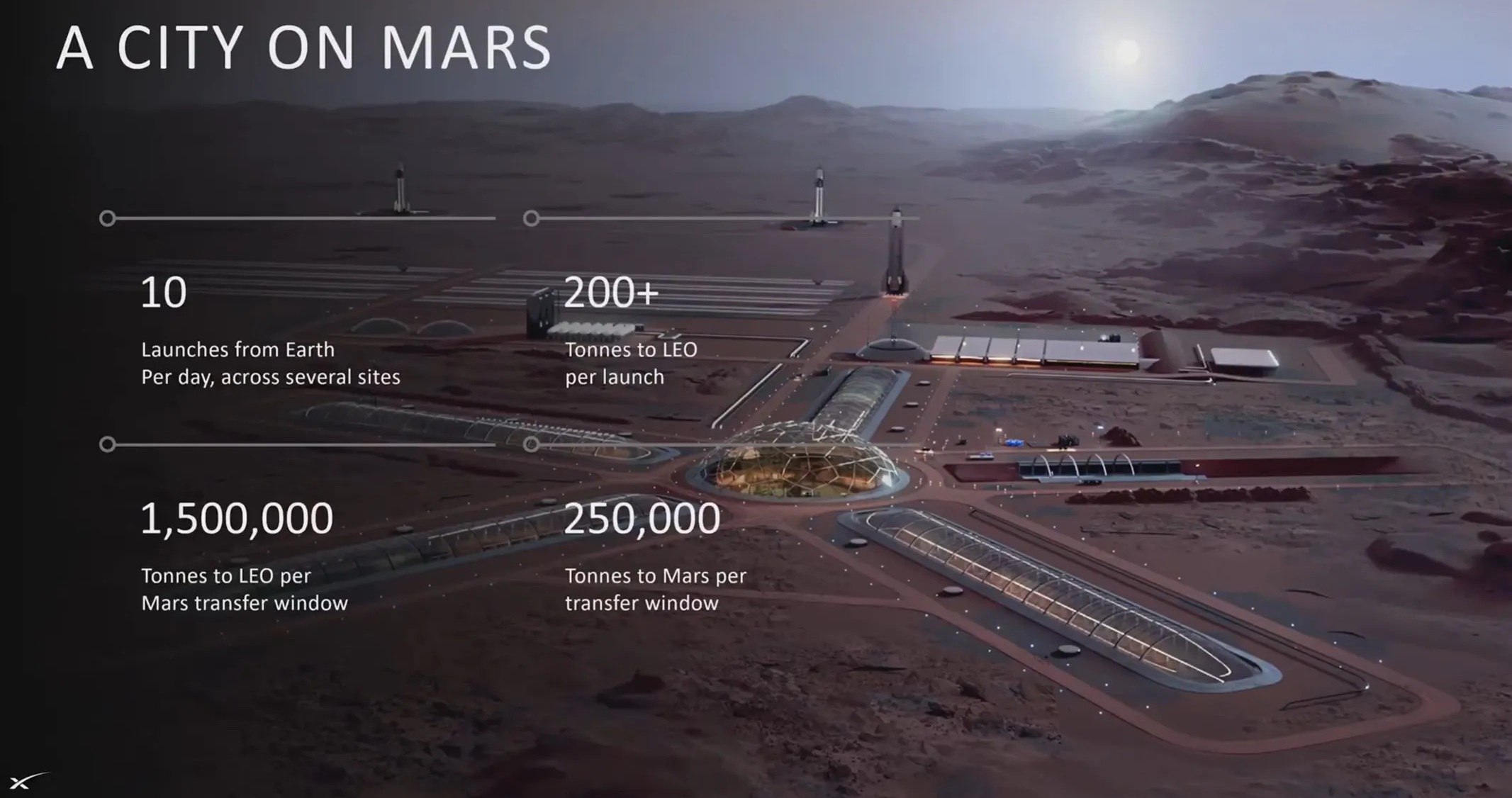Elon Musk, the visionary behind SpaceX, has once again captured global attention with his ambitious timeline for Mars colonization.
In a recent announcement, Musk revealed that the first missions to the Red Planet are set to commence as early as 2026, marking a significant step toward humanity’s interplanetary future. Here’s a breakdown of the plan, the challenges, and what this could mean for space exploration.
The Roadmap to Mars: Robots First, Humans Next
 Musk’s strategy begins with an initial wave of robotic explorers. In 2026, SpaceX plans to send its humanoid robots, known as Optimus, to Mars.
Musk’s strategy begins with an initial wave of robotic explorers. In 2026, SpaceX plans to send its humanoid robots, known as Optimus, to Mars.
These advanced robots will serve as the vanguard, testing critical colonization technologies and preparing the groundwork for human arrival. Their tasks will include setting up infrastructure, testing life-support systems, and ensuring the harsh Martian environment can sustain human presence.
Following this robotic mission, the first humans are slated to set foot on Mars between 2027 and 2028. During this phase, SpaceX aims to establish a preliminary base, laying the foundation for a permanent human settlement. Musk envisions this base as the starting point for a self-sustaining colony, a long-standing goal of his that aligns with his broader mission to make humanity a multi-planetary species.
Scaling Up: A Vision for the 2030s
 Musk’s plans don’t stop at a single base. By 2030, SpaceX intends to ramp up its operations significantly, targeting 100 rocket launches to Mars annually. This aggressive schedule would enable the transport of more equipment, supplies, and personnel to expand the Martian outpost.
Musk’s plans don’t stop at a single base. By 2030, SpaceX intends to ramp up its operations significantly, targeting 100 rocket launches to Mars annually. This aggressive schedule would enable the transport of more equipment, supplies, and personnel to expand the Martian outpost.
Looking further ahead, Musk has set an even loftier goal for 2033: achieving 500 launches per year and initiating resource extraction on Mars. Mining resources like water ice (for fuel and sustenance) and minerals could make the colony more self-sufficient, reducing reliance on Earth for supplies.
This step is crucial for Musk’s ultimate vision of a thriving Martian civilization capable of supporting millions of people.
Reality or Billionaire Hype?
 Musk’s track record with ambitious deadlines is a mixed bag. He has a history of delivering groundbreaking innovations—like reusable rockets and the Starlink satellite network — but often on a delayed timeline.
Musk’s track record with ambitious deadlines is a mixed bag. He has a history of delivering groundbreaking innovations—like reusable rockets and the Starlink satellite network — but often on a delayed timeline.
For instance, SpaceX’s Starship, the spacecraft designed for Mars missions, has made significant progress with test flights, but challenges like perfecting reentry and ensuring crew safety remain.
Additionally, the harsh Martian environment poses unique hurdles: extreme temperatures, low atmospheric pressure, and high radiation levels all complicate colonization efforts.
On the other hand, Musk’s ability to push boundaries is undeniable. SpaceX has already revolutionized the space industry by slashing launch costs and achieving feats like landing astronauts on the International Space Station. If anyone can make Mars colonization a reality, many argue, it’s Musk.
 Also read:
Also read:
- Disney Rolls Out Massive Perks Program to Retain Subscribers Amid Rising Churn Concerns
- Nielsen’s First 35-Day Multiplatform Ratings Reveal Netflix’s Dominance, But Broadcast TV Holds Strong in 2024-25 Season
- Meta AI Reaches 1 Billion Monthly Active Users, Doubling Since September 2024
What’s Next?
The coming years will be a litmus test for Musk’s promises. The 2026 robotic mission will be a critical milestone, demonstrating whether SpaceX can successfully deploy and operate technology on Mars. If successful, it could pave the way for human missions and bring Musk’s vision closer to reality. However, skeptics caution that unforeseen technical, financial, or regulatory challenges could delay the timeline.
Whether this is science fiction or the dawn of a new era in human history, one thing is certain: Elon Musk’s Mars ambitions continue to inspire and challenge our understanding of what’s possible. By 2026, we’ll have a clearer picture of whether the Red Planet is within our reach—or if this is just another of the billionaire’s lofty promises.
This article is concise, structured, and balanced, providing an overview of Musk’s Mars timeline, the phased approach, and a critical perspective on its feasibility.






